
Raffaello Sanzio Raphael Painting Reproductions 5 of 5
1483-1520
Italian High Renaissance Painter
111 Raphael Paintings
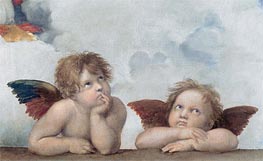
Putti (Detail from The Sistine Madonna) 1513
Oil Painting
$1350
$1350
Canvas Print
$61.75
$61.75
SKU: RSA-11344
Raffaello Sanzio Raphael
Original Size: unknown
Gemaldegalerie Alte Meister, Dresden, Germany
Raffaello Sanzio Raphael
Original Size: unknown
Gemaldegalerie Alte Meister, Dresden, Germany
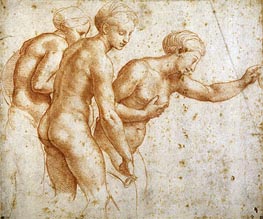
The Three Graces n.d.
Paper Art Print
$58.48
$58.48
SKU: RSA-11345
Raffaello Sanzio Raphael
Original Size: 22.6 x 27 cm
Private Collection
Raffaello Sanzio Raphael
Original Size: 22.6 x 27 cm
Private Collection
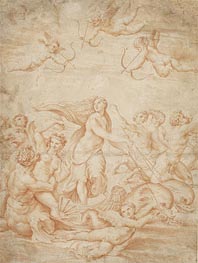
The Triumph of Galatea n.d.
Paper Art Print
$58.48
$58.48
SKU: RSA-11346
Raffaello Sanzio Raphael
Original Size: unknown
Ashmolean Museum, Oxford, UK
Raffaello Sanzio Raphael
Original Size: unknown
Ashmolean Museum, Oxford, UK
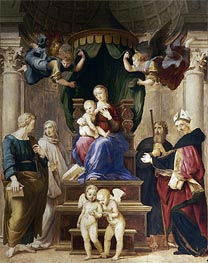
Madonna del Baldacchino c.1507
Oil Painting
$3148
$3148
Canvas Print
$63.43
$63.43
SKU: RSA-11347
Raffaello Sanzio Raphael
Original Size: 279 x 217 cm
Palazzo Pitti, Florence, Italy
Raffaello Sanzio Raphael
Original Size: 279 x 217 cm
Palazzo Pitti, Florence, Italy
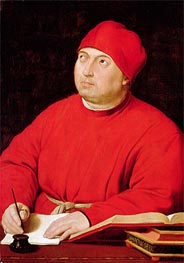
Portrait of Tommaso Inghirami c.1516
Oil Painting
$1732
$1732
Canvas Print
$61.75
$61.75
SKU: RSA-11348
Raffaello Sanzio Raphael
Original Size: 90 x 62.5 cm
Isabella Stewart Gardner Museum, Boston, USA
Raffaello Sanzio Raphael
Original Size: 90 x 62.5 cm
Isabella Stewart Gardner Museum, Boston, USA
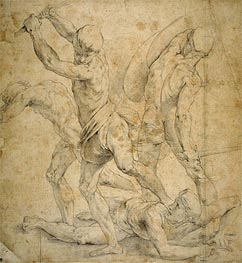
Drawing for The School of Athen's n.d.
Paper Art Print
$58.48
$58.48
SKU: RSA-11349
Raffaello Sanzio Raphael
Original Size: 37.4 x 34.6 cm
Private Collection
Raffaello Sanzio Raphael
Original Size: 37.4 x 34.6 cm
Private Collection
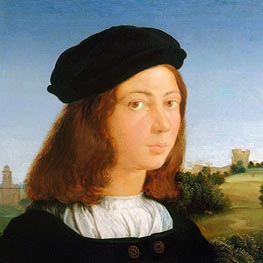
Portrait of a Man c.1506/13
Oil Painting
$1498
$1498
Canvas Print
$61.75
$61.75
SKU: RSA-11350
Raffaello Sanzio Raphael
Original Size: 42.8 x 41.9 cm
The Royal Collection, London, UK
Raffaello Sanzio Raphael
Original Size: 42.8 x 41.9 cm
The Royal Collection, London, UK
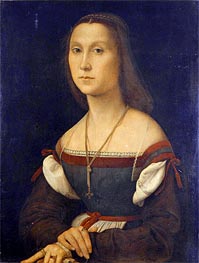
La Muta (The Silent One) n.d.
Oil Painting
$1795
$1795
SKU: RSA-11351
Raffaello Sanzio Raphael
Original Size: 64 x 48 cm
Galleria Nazionale delle Marche, Urbino, Italy
Raffaello Sanzio Raphael
Original Size: 64 x 48 cm
Galleria Nazionale delle Marche, Urbino, Italy
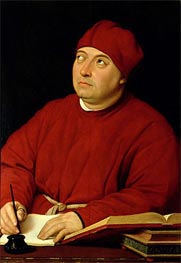
Portrait of Tommaso Inghirami c.1511
Oil Painting
$1732
$1732
Canvas Print
$61.75
$61.75
SKU: RSA-11352
Raffaello Sanzio Raphael
Original Size: 89 x 62 cm
Palazzo Pitti, Florence, Italy
Raffaello Sanzio Raphael
Original Size: 89 x 62 cm
Palazzo Pitti, Florence, Italy

Portrait of Cardinal Bernardo Dovizzi Bibbiena c.1514/16
Oil Painting
$1789
$1789
Canvas Print
$72.49
$72.49
SKU: RSA-11353
Raffaello Sanzio Raphael
Original Size: 85 x 66.3 cm
Palazzo Pitti, Florence, Italy
Raffaello Sanzio Raphael
Original Size: 85 x 66.3 cm
Palazzo Pitti, Florence, Italy
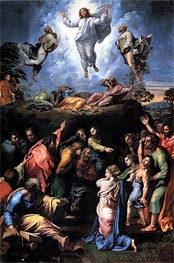
The Transfiguration c.1519/20
Oil Painting
$17481
$17481
Canvas Print
$63.81
$63.81
SKU: RSA-11354
Raffaello Sanzio Raphael
Original Size: 405 x 278 cm
Pinacoteca, Vatican, Vatican City
Raffaello Sanzio Raphael
Original Size: 405 x 278 cm
Pinacoteca, Vatican, Vatican City

Portrait of Elisabetta Gonzaga c.1503
Oil Painting
$1631
$1631
Canvas Print
$61.75
$61.75
SKU: RSA-11355
Raffaello Sanzio Raphael
Original Size: 53 x 37 cm
Galleria degli Uffizi, Florence, Italy
Raffaello Sanzio Raphael
Original Size: 53 x 37 cm
Galleria degli Uffizi, Florence, Italy
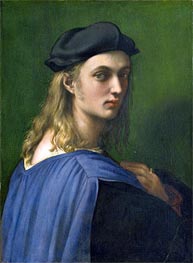
Portrait of Bindo Altoviti c.1515
Oil Painting
$1654
$1654
Canvas Print
$68.06
$68.06
SKU: RSA-11356
Raffaello Sanzio Raphael
Original Size: 59.7 x 43.8 cm
National Gallery of Art, Washington, USA
Raffaello Sanzio Raphael
Original Size: 59.7 x 43.8 cm
National Gallery of Art, Washington, USA

Portrait of a Young Man (Possibly Francesco Maria ... 1514
Oil Painting
$2243
$2243
SKU: RSA-16837
Raffaello Sanzio Raphael
Original Size: 75 x 59 cm
Destroyed in World War II
Raffaello Sanzio Raphael
Original Size: 75 x 59 cm
Destroyed in World War II
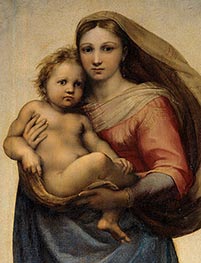
The Sistine Madonna (Detail) 1513
Oil Painting
$1597
$1597
Canvas Print
$71.46
$71.46
SKU: RSA-17123
Raffaello Sanzio Raphael
Original Size: unknown
Gemaldegalerie Alte Meister, Dresden, Germany
Raffaello Sanzio Raphael
Original Size: unknown
Gemaldegalerie Alte Meister, Dresden, Germany